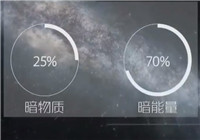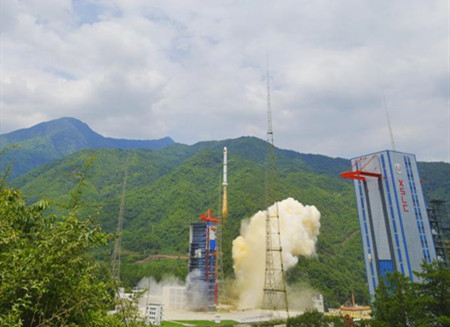China's Dark Matter Particle Explorer or DAMPE has detected unexpected and mysterious signals in its measurement of high-energy cosmic rays, which might bring scientists a step closer to shedding light on invisible dark matter.
The satellite, also called Wukong, or Monkey King, has measured more than 3.5 billion cosmic ray particles with the highest energy up to 100 tera-electron-volts, TeV for short, corresponding to 1 trillion times the energy of visible light, including 20 million electrons and positrons, with unprecedentedly high energy resolution.
The initial detection results were published in the latest issue of the academic journal, Nature.
Precise measurement of cosmic rays, especially at the very high energy range, is important for scientists to look for traces of dark matter annihilation or decay, as well as to understand the most energetic astrophysical phenomena in the universe, such as pulsars, active galaxy nuclei and supernova explosions.
Dark matter, which cannot be seen or touched, is one of the great mysteries of science. Scientists calculate that normal matter, such as galaxies, stars, trees, rocks and atoms, accounts for only about 5 percent of the universe. However, about 26.8 percent of the universe is dark matter and 68.3 percent dark energy.
China sent DAMPE into an orbit of about 500 kilometers above the earth on December 17, 2015, to look for evidence of the annihilation or decay of dark matter particles in space.
DAMPE has the widest energy range coverage and the highest energy resolution of all the dark matter probes currently in space. Based on the satellite's data, scientists drew the cosmic ray electron and positron spectrum.
To their surprise, scientists found a break at around 0.9 TeV and a strange spike at around 1.4 TeV on the spectrum.
More than 100 Chinese scientists and engineers, together with those from Switzerland and Italy, took part in the development of DAMPE and the analysis of its data.
Researchers have ruled out the possibility that the unusual signals are caused by a malfunction of the satellite's detectors. Independent analyses from five different teams all came to the same conclusion.
DAMPE's design life is three years but as it is performing so well, scientists expect it to work much longer.
Chen Hesheng, a CAS academician, said that even if a candidate dark matter particle is found, it still needs other experiments such as underground detection or collider experiments to confirm it, which would be difficult.






